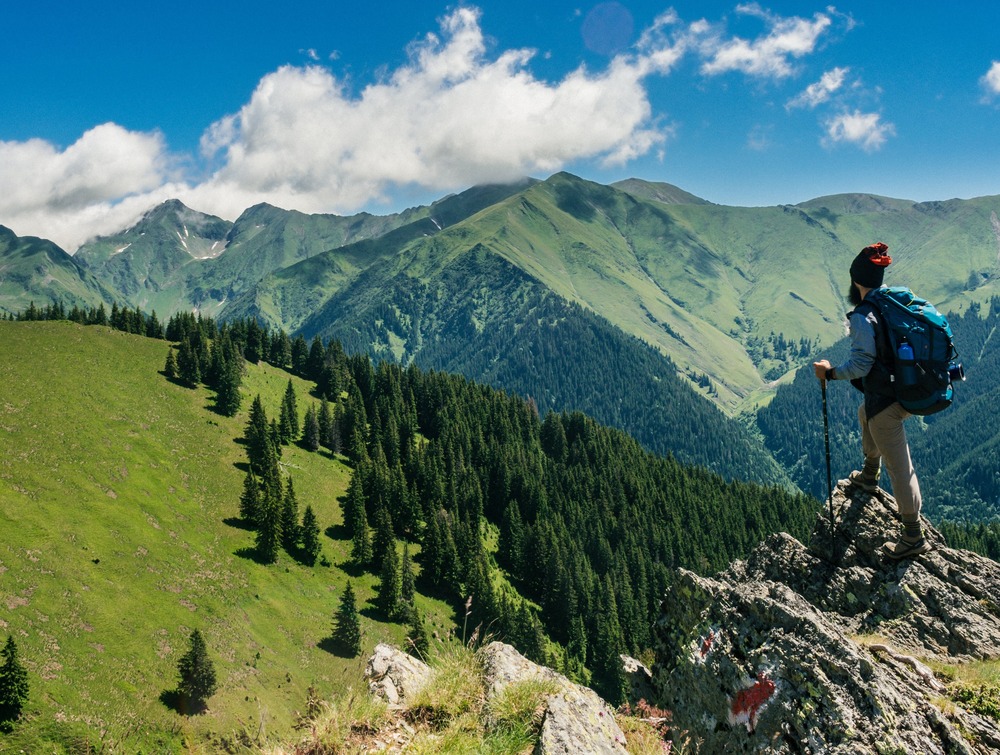Camping and hiking are popular outdoor activities that allow you to connect with nature and enjoy its beauty. However, it’s essential to be aware of potentially poisonous plants that you might encounter during your adventure.
This guide will help you identify these plants, prevent accidental exposure, and take necessary precautions when venturing outdoors. So, sit back and learn about “plants to be aware of when hiking”. Let`s get started.
Poison Ivy

Poison ivy (Toxicodendron radicans) is a common poisonous plant found in various parts of the United States. It is known for causing skin irritation, redness, and itching due to its oily resin called urushiol.
The plant has three leaflets, and its appearance can vary, sometimes appearing as a shrub or a vine. To avoid contact with poison ivy, remember the phrase, “Leaves of three, let it be.”
Symptoms and treatment of poison ivy exposure
If you come into contact with poison ivy, you may experience symptoms such as:
Itching and redness.
Swelling and blisters.
Difficulty breathing (if inhaled).
To treat poison ivy exposure, follow these steps:
Wash the affected area with soap and water immediately.
Apply over-the-counter corticosteroid creams or calamine lotion.
Take antihistamines for itching.
Consult a doctor if symptoms worsen.
Poison Oak

Poison oak (Toxicodendron diversilobum) is another poisonous plant found mainly in western North America. Similar to poison ivy, it contains urushiol, which causes skin irritation upon contact. Poison oak leaves typically have three-lobed leaflets, resembling oak leaves.
Symptoms and treatment of poison oak exposure
The symptoms and treatment of poison oak exposure are similar to those of poison ivy. If you experience any of the mentioned symptoms, follow the same steps outlined above for poison ivy.
Poison Sumac

Poison sumac (Toxicodendron vernix) is a poisonous plant predominantly found in the eastern United States. It grows as a shrub or small tree and has pinnately compound leaves with 7-13 leaflets. Like poison ivy and poison oak, poison sumac contains urushiol, causing similar skin reactions.
Symptoms and treatment of poison sumac exposure
The symptoms and treatment for poison sumac exposure are the same as for poison ivy and poison oak. If you come into contact with poison sumac, follow the outlined steps above for treatment.
Giant Hogweed

Giant hogweed (Heracleum mantegazzianum) is an invasive plant native to Eurasia but found in various parts of the United States and Canada. When exposed to sunlight, the plant’s sap can cause severe skin reactions, including burns, blisters, and long-lasting scars (phytophotodermatitis).
Symptoms and treatment of giant hogweed exposure
If you come into contact with giant hogweed sap, you may experience:
Painful blisters and burns.
Skin discoloration and scarring.
Eye irritation and potential blindness (if sap enters the eyes).
To treat giant hogweed exposure, follow these steps:
Wash the affected area with soap and water immediately.
Keep the area covered and avoid sunlight exposure.
Apply topical steroids and take pain-relief medication as needed.
Seek medical attention if the reaction is severe or if sap has entered your eyes.
Water Hemlock

Water hemlock (Cicuta spp) is a highly toxic plant found in wetlands and marshy areas across North America. It is often mistaken for edible plants like wild carrots or parsnips. Ingestion of water hemlock can cause severe symptoms and even be fatal.
Symptoms and treatment of water hemlock poisoning
If you accidentally ingest water hemlock, you may experience:
Nausea and vomiting.
Abdominal pain and diarrhea.
Seizures, dizziness, or muscle tremors.
Respiratory distress and potential death.
If you suspect water hemlock poisoning, seek immediate medical attention. Treatment may include:
Activated charcoal to prevent further absorption of toxins.
Supportive care to manage seizures and maintain vital functions.
Intravenous fluids to maintain hydration.
Stinging Nettle

Stinging nettle (Urtica dioica) is a plant found in various regions across the globe. While not as toxic as other plants on this list, it can cause skin irritation due to its hair-like structures that release chemicals upon contact.
Symptoms and treatment of stinging nettle exposure
If you come into contact with stinging nettle, you may experience:
Burning, itching, and redness.
Raised bumps or hives.
To treat stinging nettle exposure, follow these steps:
Wash the affected area with soap and water.
Apply a cold compress to soothe the skin.
Use over-the-counter creams or antihistamines to relieve itching.
Consult a doctor if symptoms worsen or persist.
Conclusion
Being aware of poisonous plants while camping and hiking is essential for a safe and enjoyable outdoor experience. By familiarizing yourself with the appearance, habitat, and symptoms associated with these plants, you can prevent exposure and know how to respond in case of an emergency. Always be cautious when in nature and remember that proper identification is crucial for your safety.


